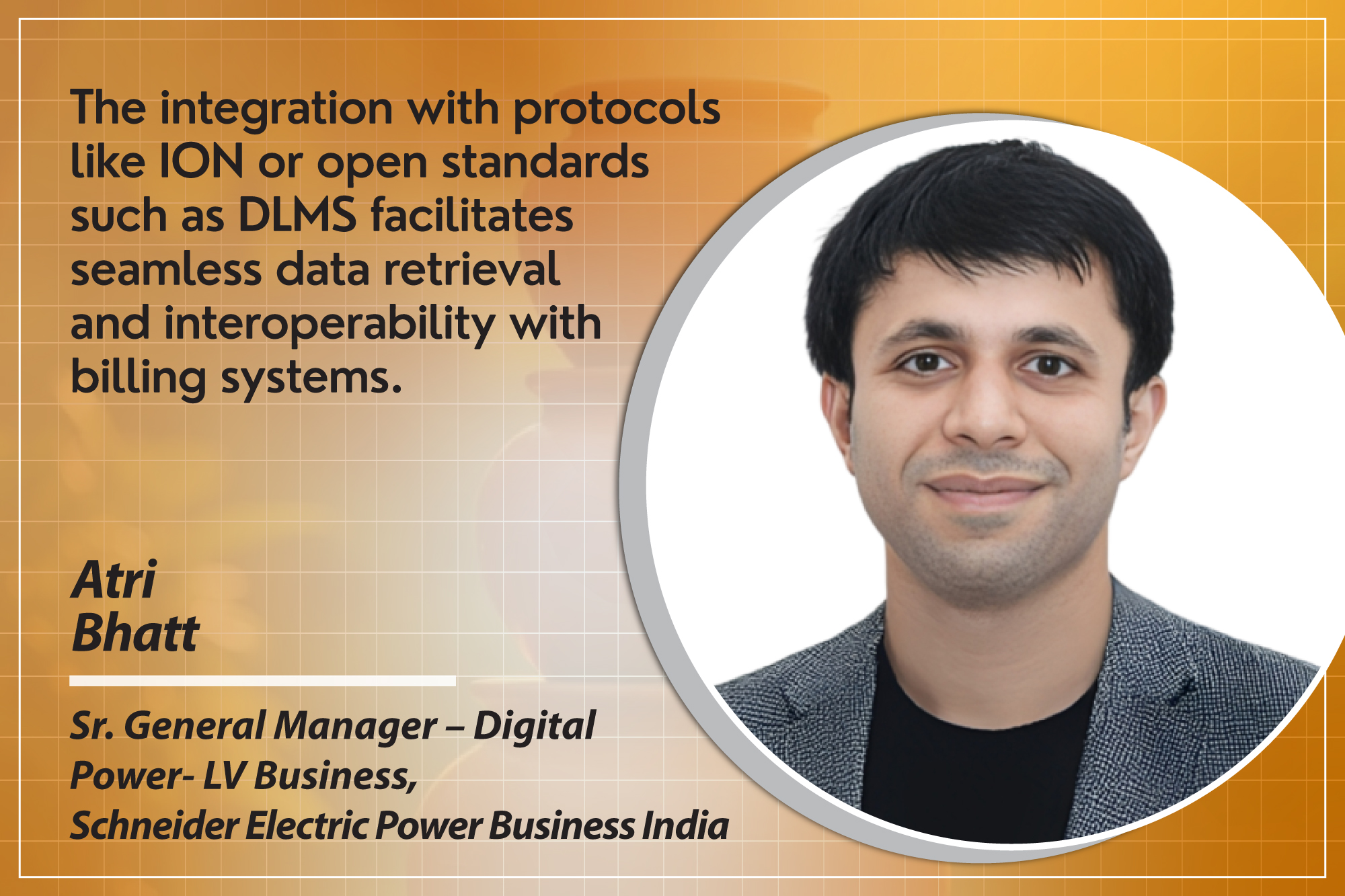Schneider Electric adopts the IEC 62443 standard to ensure cybersecurity
By Staff Report August 25, 2025 7:53 pm IST
By Staff Report August 25, 2025 7:53 pm IST

The integration with protocols like ION or open standards such as DLMS facilitates seamless data retrieval and interoperability with billing systems.
Smart metering is at the centre of the digital revamp in the electrical industry. These meters enhance operational efficiency, making data-driven decision-making easier. The technologies for advanced metering enable real-time monitoring, accurate billing and comprehensive power quality reporting. This allows utilities and critical power users, such as data centres, to optimise energy usage and system performance. The integration with protocols like ION (Integrated Object Network)
Open standards, such as DLMS (Device Language Message Specification), in smart meters facilitate seamless data retrieval and interoperability with billing systems. It ensures transparency and ease for end consumers. Companies are also increasingly aligning their strategies with national initiatives like ‘Make in India’, localising manufacturing and R&D efforts while adhering to cybersecurity standards such as IEC 62443 and BIS regulations. Atri Bhatt shares that these solutions balance operational efficiency with consumer privacy by combining secure data collection, encrypted communication and user-focused features. Let us hear from him.
How is Schneider Electric ensuring India-specific products meet local standards while maintaining IEC62443 cybersecurity compliance?
Products that are designed for India are typically made in India. We have our factories and R&D teams located in Bangalore. This includes initiatives such as I4I projects to help growth in India. When it comes to cybersecurity, Schneider Electric as a whole has adopted the IEC62443 standard as a platform for OT (Operational Technologies). This is something we will continue to use to define our product and system-level cybersecurity. IEC 62443 is an internationally recognised standard with third-party certification available. We will utilise this to find overlaps with existing CS standards (BIS?) and then cover the gaps as needed.
How does your system ensure secure, real-time billing and data tracking while balancing DLMS accessibility and user credential protection?
Typically, like in the US, we work with the billing company to integrate the ION protocol such that it can pull the billing logs directly from the meter. We do have features in PME (Power Monitoring Expert)that can be used for billing purposes and for real-time tracking. This also brings a dearth of other features beyond billing and real-time tracking, such as PQ reporting.
Our main data collection protocol is ION. We have introduced a proprietary protocol that includes a secure version, which encrypts the traffic in a TLS 1.3 tunnel. This protects the user’s confidentiality during password exchange. The only other method that can be used to extract datalogs from the device is via DLMS, and it does not require authentication before extraction. It makes the log readily available via DLMS, so no user credentials are compromised when using the cleartext protocol. DLMS, however, is disabled by default and needs to be configured.
How does your company prioritise growth and adjust projections in advanced metering across critical sectors?
As a large multi-organisational company, we are focused on all consumer markets, and the approach varies depending on the line of business involved. Specific to advanced metering, our main focus is to target growth in the critical power sectors. This means focusing on renewables and utility generation, as well as distribution and also focusing on essential users of power, such as data centres. We adjust our volume projections based on market trends and the company’s current position in these segments.
*************************************
We use cookies to personalize your experience. By continuing to visit this website you agree to our Terms & Conditions, Privacy Policy and Cookie Policy.